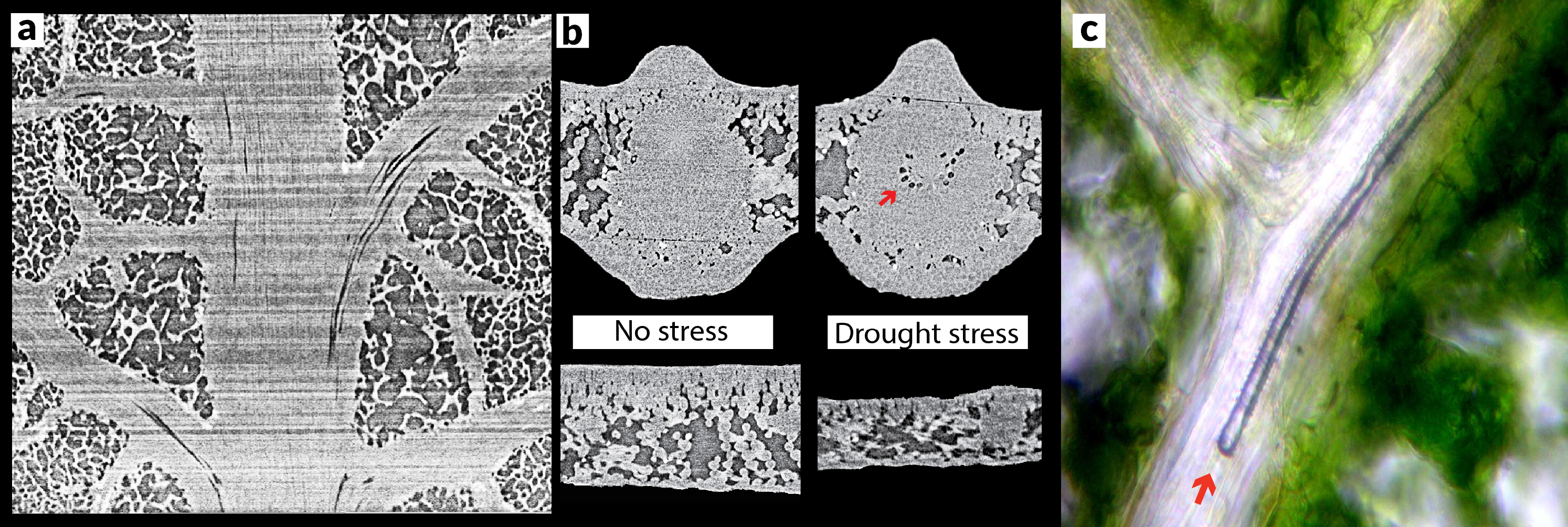When leaves open their surface pores (stomata) to capture CO2 for photosynthesis, water evaporates and needs replacement. During drought, replacing this water becomes increasingly difficult; if an air bubble (embolism) forms in the pipes (xylem) within the leaf veins, blockages can result. Although this concept is well accepted in the science community, the lack of proper methods to visualize it in living leaves has hindered our ability to understand and quantify its commonness and the risk it poses to plants during drought.
Plant scientists from the University of California, Yale, and the USDA Agricultural Research Service, along with expert collaborators from France and Australia, have used x-ray microtomography at ALS Beamline 8.3.2 to visualize embolism in the veins of living leaves at increasing levels of drought stress. Surprisingly, results from this NSF-funded research showed that emboli were not as common as previously assumed, occurring only during very intense drought. The leaf stem and large central vein were the parts most vulnerable. Meanwhile, the very fine, extensive vein network within the leaf remained unblocked by air even under extreme drought.
Further experiments on California native plants and Arabidopsis revealed that, as leaf tissues dry out, strong reductions in water transport occur due to changes in the living cells outside the xylem. These reductions relieved the tension within leaf veins, protecting the vein xylem from embolizing by potentially inducing the stomata to close. The results greatly expand our view of leaf drought responses, beyond the traditional embolism-centric view, to a broader focus on the fundamental role of living tissues in water movement during drought.

Work performed at ALS Beamline 8.3.2.
C. Scoffoni, C. Albuquerque, C. Brodersen, S. Townes, G.P. John, M.K. Bartlett, T.N. Buckley, A.J. McElrone, and L. Sack, “Outside-xylem vulnerability, not xylem embolism, controls leaf hydraulic decline during dehydration,” Plant Physiology 173, 1197 (2017), doi:10.1104/pp.16.01643; and C. Scoffoni, C. Albuquerque, C. Brodersen, S. Townes, G.P. John, H. Cochard, T.N. Buckley, A.J. McElrone, and L. Sack, “Leaf vein xylem conduit diameter influences susceptibility to embolism and hydraulic decline,” New Phytologist 213, 1076 (2017); doi: 10.1111/nph.14256.